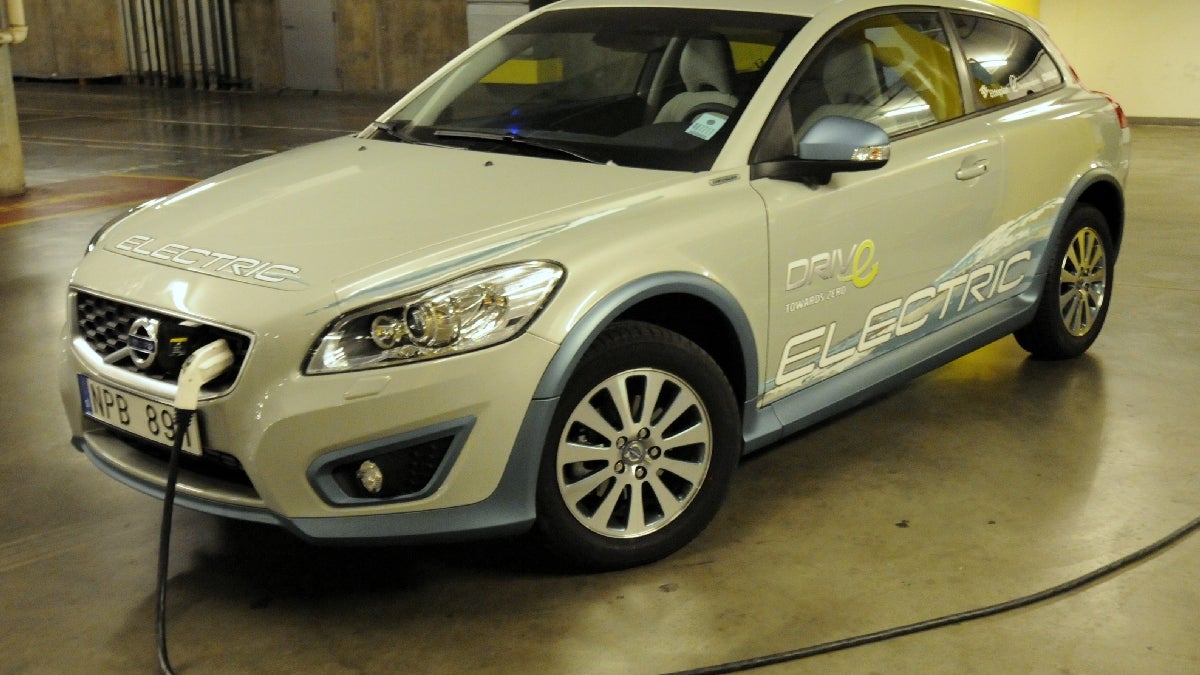Taking an electric drive in the Volvo C30
CNET Car Tech gets a drive in the Volvo C30 Drive Electric.

The Los Angeles Auto Show maintains a green focus, with alternative drivetrains and electric cars dominating. So it is here that Volvo let us drive the electric version of its C30 model, known as the C30 Drive Electric.
The car was waiting for us in a parking garage of the Los Angeles Convention Center, plugged in to an AC outlet through an extension cord. Volvo chose the C30 model for an electric drivetrain because it is the smallest and lightest car in the lineup, although by European standards this car is on the large side. It is an attractive design and offers the practicality of a hatchback. The cabin of the C30 Drive Electric showed the same premium quality we've come to expect from Volvo, with some rough bits hacked on for this electric version.
Turning the key, we saw the instrument cluster light up and go through the same kind of boot process we've experienced in both the Nissan Leaf and Chevy Volt. The charge level read nearly full, not bad for a car that had been taken out all day on drives around downtown Los Angeles.
Our Volvo minder told us to push the drive mode lever, a curving piece of metal that fit easily into our palm, back one time, putting the car into Drive. Unlike a standard shift lever, this drive selector had no gate, always popping back to its center position.
With the car in Drive we pushed the accelerator, and in typical electric car fashion it moved smoothly and quietly forward, the feeling of instantaneous torque obvious. Letting off the accelerator caused the car to slow a little more than accounted for by friction, as the car's generator used the car's motion to regenerate electricity for the batteries.
Pressing the brakes did not increase regeneration, but merely engaged the friction brakes. We would expect that Volvo could cause the brake pedal to initially activate strong regeneration, to maximize battery recharge, before engaging the friction brakes.
As we drove, we found opportunity to push the accelerator to the floor, but on city streets only getting up to about 45 mph. The acceleration held up well to that point, but felt like it would drop off as speed increased.
Taking it around corners, the low and centrally located weight of the battery packs became evident, making for good stability. Volvo says that the C30 Drive Electric has a 57/43 percent weight split between front and back. Although no perfectly balanced sports car, this C30 felt fine in the turns.
With its 24kWh Enerdel battery pack, the C30 Drive Electric has a range of 94 miles. As with most electric cars today, recharge time is measured in hours, with the car intended for urban commuting rather than long hauls.
Volvo is currently building versions of the car for fleet use by utilities and government agencies in Europe, and it looking to bring a small test fleet to California. No date has been determined for mass production at this time.

